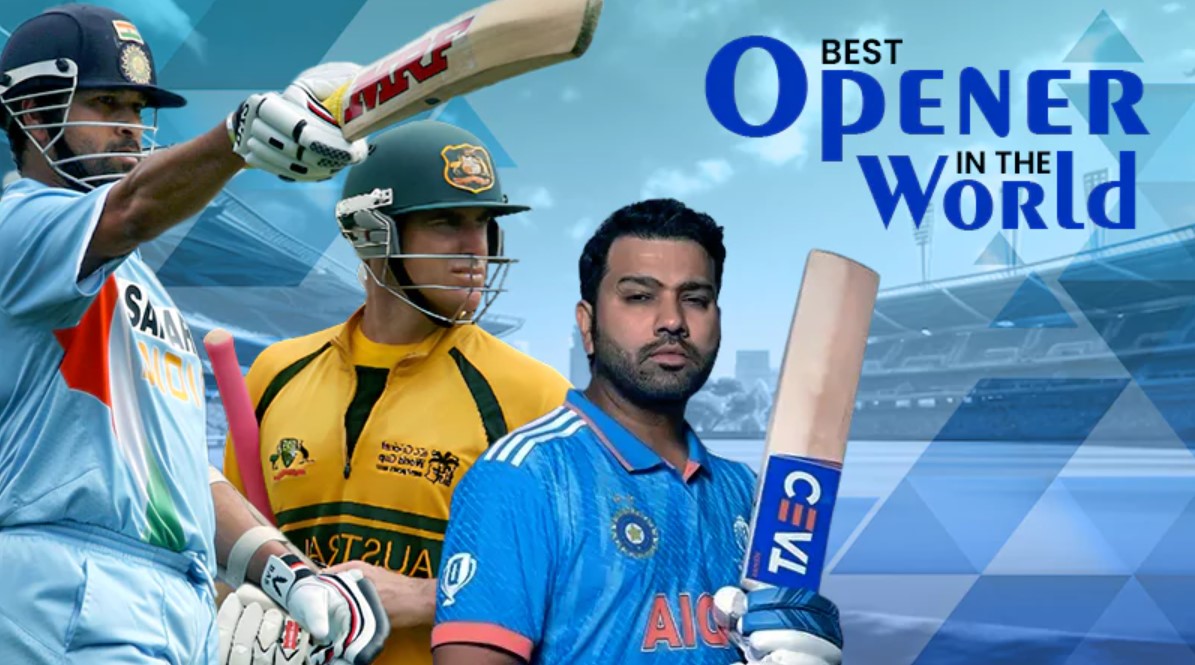All About Cricket and Culture
The ICC ICC World Cup 2023 holds a special place in the hearts of cricket enthusiasts worldwide. This tournament is not just a competition; it’s a celebration of the sport, bringing together nations and cultures in the spirit of sportsmanship. Cricket has always been more than just a game; it’s a unifying force that transcends borders.
Cricket’s roots run deep in history, originating in England and spreading to various corners of the world through colonialism and international exchanges. Over time, it has evolved into a symbol of national pride for many countries, raising the question of which nation considers cricket its national game.
In this article, we’ll delve into the fascinating history and cultural significance of cricket in several countries, exploring how this sport has shaped their identities and become an integral part of their heritage. From India’s passion for cricket to Australia competitive spirit and the West Indies’ legacy of excellence, each nation has a unique relationship with the game. Join us on this journey to discover the profound impact of cricket on nations and people around the world.

The Origins of Cricket
Cricket’s fascinating journey through history takes us back to the quaint English countryside in the 16th century. What began as a leisurely pastime among shepherds and farmers soon evolved into a sport of great competition and skill. Cricket’s transformation saw the development of rules, formats, and international contests that laid the groundwork for its global prominence today.
In its early days, cricket was a rustic affair, played on open fields with rudimentary equipment like sticks and balls. It was a game of simplicity and joy that transcended social classes. As its popularity grew, cricket found its way into English schools and universities, where it gained favor among the educated elite.
The 18th century marked a significant turning point for cricket. This era witnessed the formalization of rules and the establishment of clubs and teams dedicated to the sport. The “laws of cricket,” as crafted by the legendary cricketer John ‘Jack’ Willes, introduced structure and order to the game. Matches began to adhere to specified timeframes, and the concepts of innings and wickets became fundamental aspects of cricket.
As cricket continued to evolve, it embarked on a journey beyond England’s shores, spreading its influence across continents and captivating the hearts of millions. It transformed from a rustic pastime into a global phenomenon, showcasing the enduring spirit of competition and camaraderie that defines the sport today.

Cricket is the national game of which country?
Cricket is the national sport of India. Its journey to attain this status in the country is indeed a fascinating tale. Cricket in India is more than just a sport; it’s a religion, a unifying force, and a source of immense pride.
The introduction of cricket to India during the colonial era laid the foundation for the sport’s popularity. British officers and settlers played a significant role in promoting cricket on the subcontinent. However, cricket truly became embedded in Indian culture after gaining independence in 1947.
Post-independence, cricket became a symbol of national identity and unity for India. It provided a platform for the country to assert itself on the international stage. The Indian cricket team’s victories became a source of immense national pride, none more so than the iconic 1983 Cricket World Cup win.
The 1983 World Cup triumph was a watershed moment in Indian cricket history. Kapil Dev and his team’s remarkable journey to lifting the trophy captured the hearts of millions and solidified cricket’s place as the nation’s favorite pastime. From that point forward, cricket became more than just a game; it became an integral part of India’s cultural identity.
Today, cricket continues to hold a special place in the hearts of Indians, transcending boundaries, languages, and regions. It serves as a unifying force that brings together a diverse nation, all cheering for the Men in Blue. Cricket’s significance in India extends far beyond the boundaries of a cricket ground; it’s a reflection of the country’s passion, resilience, and unwavering love for the game.

Cricket: The Heart and Soul of India
In India, cricket is more than just a sport; it’s a way of life. The game reverberates in every corner of the nation, transcending age, gender, and social strata. From bustling cities to remote villages, cricket brings people together in a shared celebration of skill, strategy, and sportsmanship.
The cricket fever is most palpable during major tournaments like the ICC Cricket World Cup and the Indian Premier League (IPL). Streets are adorned with flags, homes are decorated in team colors, and conversations revolve around the latest matches and players’ performances. It’s a spectacle that unites millions in a collective experience of hope, excitement, and pride.
Cricket idols are born in India, and their impact extends far beyond the boundaries of the playing field. Youngsters look up to cricketers not just for their sporting abilities, but also for their values, discipline, and dedication. The likes of Sachin Tendulkar, Rahul Dravid, and M.S. Dhoni are not just cricketing legends; they’re role models who inspire generations.
Cricket’s influence in India isn’t confined to sports; it’s deeply intertwined with the country’s cultural identity. The iconic stadiums like Eden Gardens in Kolkata and Wankhede Stadium in Mumbai aren’t just venues for matches; they’re hallowed grounds where history has been made. Chants, anthems, and the roar of the crowd create an electric atmosphere that’s an essential part of the cricketing experience.
Moreover, cricket has played a significant role in fostering a sense of national unity and pride. Regardless of language, religion, or region, when the Indian cricket team takes the field, the entire nation stands united. It’s a rare phenomenon where a sport acts as a unifying force for a country as diverse as India.
In essence, cricket is more than just a game in India; it’s an emotion, a passion, and a cultural phenomenon that continues to shape the nation’s identity. It’s the beating heart of India, and its influence extends far beyond the boundaries of the 22-yard pitch, resonating in the hearts and souls of every cricket-loving Indian.

Cricket and Cultural Significance
Cricket is interwoven with India’s diverse cultural tapestry. It transcends linguistic, regional, and religious differences, offering a common ground where people from all walks of life unite. The cricket stadium becomes a melting pot of emotions, where fans from different backgrounds celebrate a shared passion.
During matches, you’ll find an array of emotions on display - from jubilation to heartache. The sport mirrors life itself, teaching lessons of teamwork, perseverance, and grace in both victory and defeat. Cricket’s cultural significance is exemplified by the festive atmosphere during matches, where families gather around their television screens, and even workplaces come to a standstill as colleagues rally behind their favorite teams.
Beyond the boundaries, cricket has inspired art, literature, and music. It’s a recurring theme in Bollywood films, symbolizing the triumph of the underdog and the power of determination. Cricket analogies are often used to convey life’s challenges, making the sport a metaphor that resonates deeply with the Indian psyche.
Cricket also plays a pivotal role in fostering social bonds. From gully cricket matches in local neighborhoods to watching international games in packed stadiums, it’s a shared experience that brings people closer. The post-match discussions and debates are not just about cricket; they’re about life, aspirations, and the spirit of resilience.
In essence, cricket in India is more than just a sport; it’s a cultural phenomenon that weaves its way into the fabric of everyday life. It’s a source of joy, a symbol of hope, and a reminder that, in the grand tapestry of Indian culture, cricket holds a special place in the hearts of millions.
Cricket’s Impact on the Economy
Cricket isn’t just a game; it’s an economic powerhouse. The Indian Premier League (IPL), a T20 cricket league, has become a global phenomenon, attracting top players from around the world and generating significant revenue. The league’s success has led to an influx of sponsorships, broadcasting deals, and investments in cricket-related industries.
The IPL not only provides thrilling cricket matches but also contributes substantially to India’s economy. The league generates revenue through ticket sales, merchandise, broadcasting rights, and advertising partnerships. It has also led to the growth of ancillary industries, such as hospitality, travel, and media, that benefit from the increased demand during the tournament.
Moreover, the IPL has provided a platform for young and emerging players to showcase their talents and catch the attention of cricket enthusiasts worldwide. The tournament’s fast-paced format, star-studded line-ups, and nail-biting finishes have made it a prime attraction in the sports entertainment industry.
The economic impact of cricket goes beyond just the IPL. International cricket matches, especially high-profile series and tournaments, draw significant crowds and television viewership. This translates into revenue from ticket sales, advertising, and broadcasting rights. The bustling activity around cricket matches stimulates local economies, benefiting sectors like tourism, hospitality, and retail.

Furthermore, cricket-related industries thrive on the sport’s popularity. Companies manufacturing cricket equipment, apparel, and accessories enjoy increased demand during peak cricketing seasons. From cricket bats to jerseys adorned with team logos, fans eagerly embrace merchandise that allows them to connect with their favorite players and teams.
Investments in grassroots cricket also contribute to the sport’s economic impact. Academies, coaching centers, and training facilities provide young talent with the resources and guidance they need to excel. As these talents progress, they may secure contracts with professional teams, opening doors to lucrative careers and further boosting the cricket ecosystem’s economic output.
Cricket’s significance to India’s economy extends to its role as a cultural ambassador. International cricket tours draw visitors from around the world, fostering cross-cultural exchanges and boosting tourism. Hosting tournaments like the ICC Cricket World Cup or the ICC T20 World Cup attracts attention on a global scale, enhancing a nation’s reputation as a sporting destination.
The Global Reach of Cricket
While cricket’s heart beats strongest in India, its influence is felt across the globe. Countries like Australia, England, Pakistan, and the West Indies have their own rich cricketing traditions and passionate fan bases. The sport’s international appeal is showcased in events like the ICC Cricket World Cup, where teams from various nations compete for the ultimate prize.
Cricket has become a global phenomenon, and it has particularly flourished in countries with a historical connection to the British Empire. Australia and England, for example, have strong cricketing traditions that rival India’s. The Ashes series between Australia and England is one of the most iconic contests in the sport.
In the West Indies, cricket is not just a game; it’s a way of life. The region has produced some of the most legendary cricketers, including Sir Vivian Richards and Brian Lara. The West Indies’ dominance in the 1970s and 1980s left an indelible mark on the sport’s history.
Pakistan is another cricketing powerhouse with a fervent fan base. The rivalry between India and Pakistan in cricket transcends the game itself, capturing the attention of millions whenever they face off on the field.
In South Africa, cricket has also made significant strides, overcoming the challenges of the apartheid era to become a formidable force in international cricket.
Today, cricket serves as a bridge between cultures and nations, fostering camaraderie and mutual respect. The sport’s global reach is a testament to its enduring appeal, as it continues to unite people worldwide in the spirit of competition and sportsmanship. Whether in the bustling streets of Mumbai, the picturesque grounds of Lord’s in London, or the sun-soaked stadiums of Australia, cricket remains a unifying force that transcends borders and boundaries.

Conclusion
Cricket’s journey from its humble beginnings in England to becoming India’s national game is a testament to its enduring appeal. Its ability to capture hearts, create economic opportunities, and promote social cohesion showcases the remarkable potential of sports to enrich lives on multiple levels.
In India, cricket is not just a game; it’s a way of life. It unites a diverse and culturally rich nation under the banner of sport. The sport’s heroes, past and present, are revered not just for their cricketing prowess but also for their influence on society.
Cricket’s influence extends far beyond the boundary ropes. It inspires young talents, drives economic growth through leagues like the Indian Premier League, and fosters a sense of national pride during international tournaments. The historic victory in the 1983 Cricket World Cup ignited a cricketing revolution in India, and the legacy continues.
As the cricketing world continues to evolve, one thing remains certain: cricket’s impact, both economic and cultural, will continue to inspire generations to come. It will serve as a reminder that sports have the power to transcend boundaries, unite nations, and create enduring legacies. In India and beyond, cricket will forever hold a special place in the hearts of millions, symbolizing not just a game but a shared passion that brings people together in celebration and unity.
FAQ
Is cricket popular only in India?
Cricket’s popularity extends beyond India; it’s played and cherished in many countries worldwide.
Who is considered the greatest cricketer of all time?
While opinions vary, players like Sir Don Bradman, Sachin Tendulkar, and Sir Vivian Richards are often hailed as some of the greatest cricketers in history.
How does cricket impact India’s economy?
Cricket contributes significantly to India’s economy through revenue generated from tournaments, sponsorships, broadcasting rights, and tourism.
Cricket is the national game of which country, Is it only in India?
While cricket holds a special place, India doesn’t have an officially designated national game.
What makes cricket unique compared to other sports?
Cricket’s blend of strategy, teamwork, and individual skill, played over extended periods, sets it apart from many other sports.
Which countries have won the ICC Cricket World Cup?
Teams like India, Australia, West Indies, and Pakistan have won the ICC Cricket World Cup in the past.
What are some famous cricketing rivalries?
Cricket boasts intense rivalries like India vs. Pakistan, England vs. Australia (Ashes series), and South Africa vs. Australia.
How has the advent of T20 cricket changed the game?
The introduction of T20 cricket has made the sport more accessible and entertaining, attracting a wider audience and boosting commercial aspects of the game.
Who are some of the most promising young talents in international cricket?
Emerging talents like Prithvi Shaw, Shaheen Afridi, and Shubman Gill have been making waves in international cricket.
What are the major cricket tournaments besides the ICC Cricket World Cup?
Cricket fans can look forward to tournaments like the Indian Premier League (IPL), the T20 World Cup, and the Ashes series, among others.







